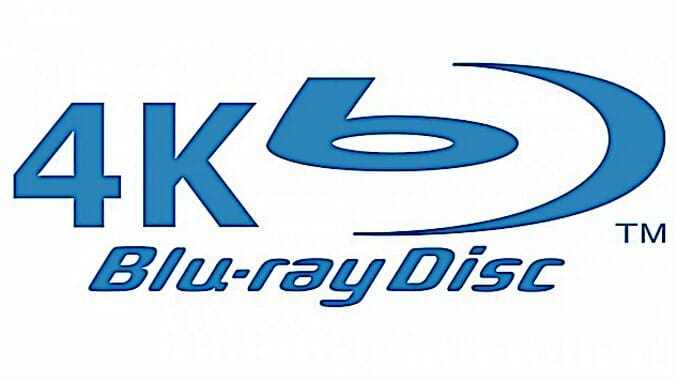
Christmas came a bit early this year for me, thanks to the joyous arrival of my new Samsung KS9000 4K TV. I’d put off jumping right into the new format for the last couple years, but, being a gamer, the release of 4K upgrades to the PlayStation 4 and Xbox One sold me. While most users of these new sets know Netflix, Amazon, and some other streaming services have 4K content, viewers who want to get the absolute best picture and audio from their sofa will still need to go old school—physical media.
Samsung, in particular, is pushing the 4K Ultra HD Blu-ray format hard, even giving 4K players away this season with certain TVs like their KS line. The Xbox One S also plays them, although, despite having helped pioneer the format, Sony opted not to include a 4K drive in their PlayStation Pro.
But in the age of streaming, is there still a point to physical media? That depends on your needs and expectations. I’ve always been a proponent of physical media for movies especially—Blu-ray discs have always been noticeably superior to 1080p streaming and broadcast TV. On the other hand, casual viewers content to still use TV sound or watch on mobile devices probably couldn’t care less about collecting yet another new disc-based format. Home theater buffs, however, will definitely want to check out UHD discs.
Netflix and Amazon look great in HDR 4K provided you have a good internet connection, but UHD discs can and frequently do look an order of magnitude better. Colors are richer and deeper (especially on HDR sets), the sharpness is pristine, and in some cases, the image nearly pops out of the screen. Pacific Rim on UHD Blu-ray is nothing short of stunning, for instance. As a movie full of dark action sequences, every scene was crisp and clear on a level I simply haven’t seen before. The gradation of colors, shading, and contrast is amazing. It was an image quality that rivaled (and in some cases) surpassed the theater.
Whether that jump in video quality from very good to amazing makes it worth buying into yet another media format (and possibly rebuying movies) is up to you. I’ve found 4K Blu-ray players also upscale regular Blu-rays amazingly well—just so long as you don’t directly compare them to their 4K Blu-ray version.
The other important factor is sound quality. Simply put, if you have a surround sound system, Blu-ray blows streaming away. Thanks to high-end HD sound formats like Dolby Atmos, Dolby TrueHD and DTS HD Master Audio, home theaters can re-create movie soundtracks in room-shakingly intense and clear detail. Typically supporting 5.1 and frequently 7.1 channel sound, these soundtracks rival the theater experience.
Finally, one of the big advantages of physical media is consistency. Streaming 4K video requires an incredible amount of bandwidth across a stable connection, which plenty of people still do not have. This leads to annoying video stutters, sudden downgrades of resolution and picture quality, and occasional crashes. 4K Blu-ray never waivers in its quality and doesn’t care about your bandwidth issues.
Even if you have a pristine connection, the bit rate dictating how much data is sent to your screen every second is still several times higher on a disc. Netflix, for instance, requires a connection that can pump out at least 14-24 Megabits of data per second, maxing out at around 60 Mbps, while 4K UHD processes between 108-124 Mbps. It makes a big difference in the end result.
Most major studios are putting their new movies out on the format, along with a handful of older titles. Disney still isn’t on board, but Fox, Sony, Warner, and Universal, among others are releasing a steady stream of films. While I still wouldn’t recommend going crazy collecting yet another new home video library, if there are special movies you want to experience in best manner possible outside the theater, 4K UHD Blu-ray is, bar none, the way to go.